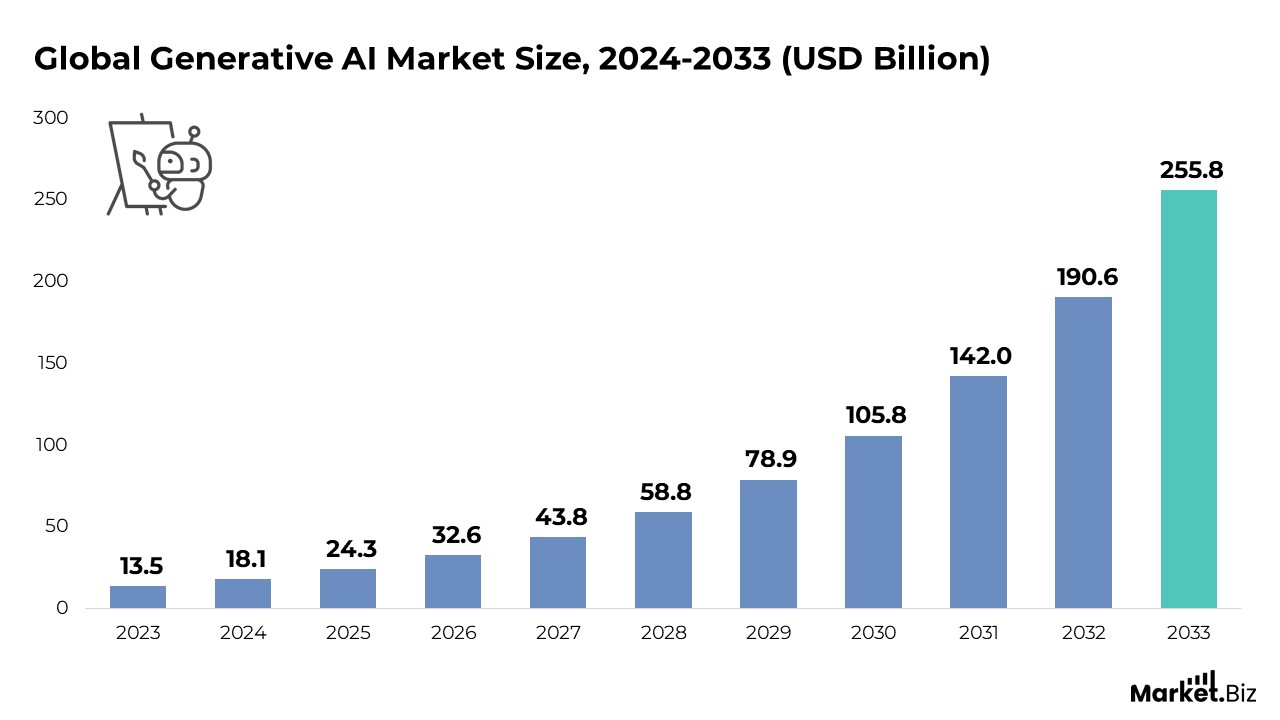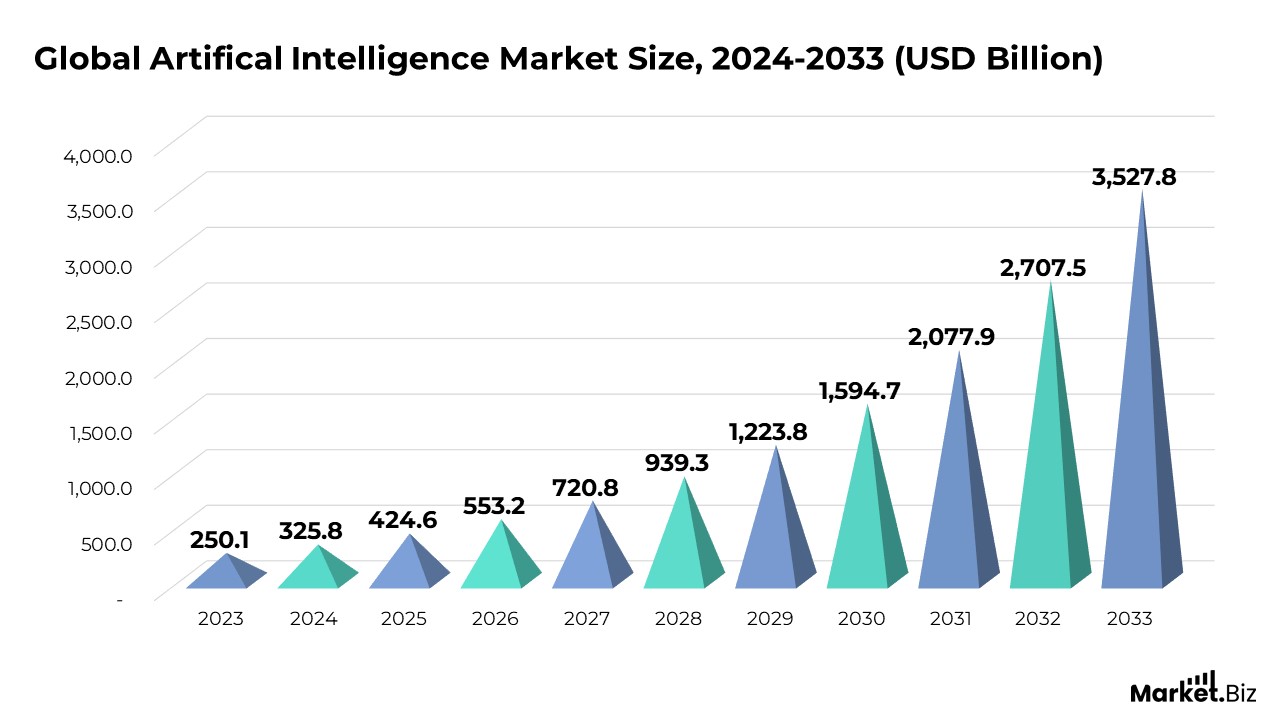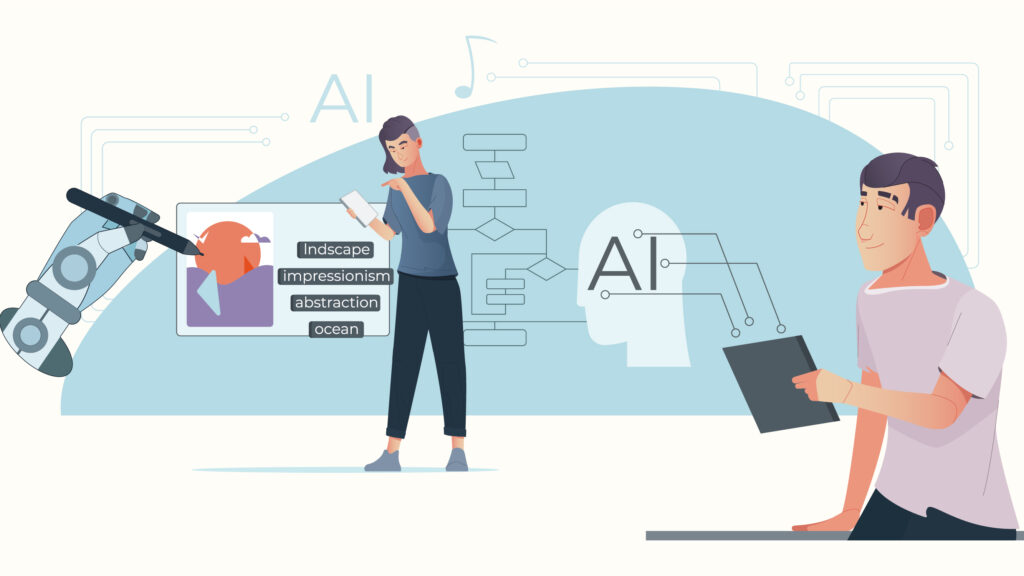Introduction
Generative AI Statistics: In recent years, generative AI has quickly become a game-changer across multiple industries, powered by advancements in machine learning and neural networks. These innovations have greatly improved the efficiency and flexibility of AI systems, enabling them to produce high-quality results.
The growing availability of extensive datasets, along with enhanced computing capabilities, has further accelerated the progress of generative AI, fostering more precise and innovative applications. This shift is particularly evident in sectors such as healthcare, automotive, finance, and entertainment, where AI-driven solutions are revolutionizing business operations and enhancing customer experiences. As digital transformation continues, the demand for generative AI is set to skyrocket, fundamentally altering how businesses function and engage with their audiences.
Editor’s Choice
- 49% of U.S. adults use AI for information searches, while 44% utilize it to acquire new knowledge.
- Approximately 25% of respondents reported using AI-powered online search engines to explore new technology.
- Despite ongoing economic challenges, 63% of company decision-makers plan to either increase or maintain their AI spending.
- 52% of U.S. respondents and 63% of UK respondents expressed discomfort with news primarily produced by AI.
- In the first two months of 2023, Darktrace security researchers observed a 135% surge in social engineering attack emails.
- Eighty-two per cent of global employees are concerned that hackers could use generative AI to create scam emails that are indistinguishable from legitimate communications.
- Americans aware of AI-generated news articles, such as those from ChatGPT, had varied views, with some seeing it as a significant advance, others as a moderate advance, and some seeing no advance at all.
- Over the past three years, generative AI technology has attracted significant venture capital funding, totalling $1.7 billion across 255 deals.
Global Generative AI Market Size

- According to Market.us, the global generative AI market is projected to grow from $24.3 billion in 2025 to $190.6 billion by 2032, representing a compound annual growth rate (CAGR) of 34.2% from 2025 to 2032.
- The advancement in machine learning and neural networks has significantly enhanced the capabilities of generative AI, making it more efficient and versatile.
- Increased data availability and enhanced computing power contribute to better learning and output generation in generative AI systems.
- The ongoing digital transformation across various sectors is driving the integration of generative AI technologies.
- The Software segment dominated the generative AI market in 2023, with a share of over 66.7%, driven by the rising demand for AI-driven applications.
- The Large Language Models segment held a dominant position in 2023, capturing over 41.3% of the market due to widespread adoption across various sectors.
- Transformer technology emerged as a leading force in the generative AI market in 2023, with a market share of more than 45.1%, driven by its natural language processing (NLP) capabilities.
- The Media & Entertainment sector emerged as the leader in generative AI in 2023, holding a market share of over 24.3% with a strong compound annual growth rate (CAGR) of 36.4%.
- The NLP segment led the generative AI market in 2023 due to its widespread adoption in numerous applications.
- North America dominated the global generative AI market in 2023, capturing 42.1% of the revenue share and is expected to sustain a CAGR of 33% throughout the forecast period.
(Source: Market.us)
Global Artificial Intelligence Market Size

- According to Market.us, the global artificial intelligence market is projected to grow from $424.6 billion in 2025 to $2,707.5 billion by 2032, representing a compound annual growth rate (CAGR) of 30.3% from 2024 to 2033.
- The increasing availability of large datasets, advancements in computing power, and the rising demand for automation across industries drive the growth of the AI market.
- In 2023, the Software segment led the AI market, holding a 43.7% market share due to its fundamental role in enabling AI capabilities across various industries.
- The Cloud-based segment dominated the AI market in 2023, capturing 64.6% of the market share, driven by the flexibility, scalability, and cost efficiency of cloud solutions.
- In 2023, the Machine Learning segment accounted for 41.1% of the AI market share, primarily due to its pivotal role in powering AI applications across various industries.
- The Healthcare segment captured 15.9% of the AI market in 2023, driven by AI’s transformative role in patient diagnostics, management, and treatment.
- North America led the global AI market in 2023, with a 38.9% market share, translating to approximately USD 97.25 billion in revenue, driven by strong innovation in the region.
(Source: Market.us)
Future Growth of Generative AI
- By 2025, AI is projected to generate 30% of outbound marketing messages for large companies, a significant rise from less than 2% in 2022.
- A major blockbuster film set for release in 2030 is predicted to have 90% of its content created by AI, compared to 0% in 2022.
- In the U.S., AI is projected to replace 7% of jobs, enhance 63% of roles, and leave 30% unaffected.
- From 2018 to 2022, the most frequently utilized categories in Generative AI were natural language interfaces and 2D media production, accounting for 29.3% and 18.8% of VC-backed deals, respectively, as well as 23.6% and 11.4% of total invested dollars.
- 35% of marketers cite ‘risk’ and ‘governance’ concerns as significant challenges when using AI-generated content.
- 43% of U.S. adult workers believe that AI-generated written content can be just as high-quality as that created by humans.
(Source: Gartner, Capterra)
U.S. Adults Using Generative AI for Online Searches
- In 2024, approximately 15 million adults in the U.S. are expected to use generative AI as their primary tool for online searches.
- By 2028, this number is expected to exceed 36 million users.

(Source: Statista)
Generative AI Usage Statistics
- AI is becoming increasingly integrated into the workplace, with 75% of knowledge workers expected to use AI by 2024, up from 46% just six months earlier.
- By 2025, it is anticipated that 30% of outbound marketing messages from large companies will be generated by artificial intelligence (AI).
- Fraud detection, risk management, and cybersecurity are identified as the top three benefits of AI, according to survey respondents.
- 37% of marketing and advertising professionals have incorporated generative AI into their work.
- Nearly 50% of the most common use cases for generative AI are focused on troubleshooting, technical support, professional and personal assistance, and educational purposes.
(Source: Microsoft, Gartner, MIT Technology, Harvard Business Review, ServiceNow)
Most Popular Types of Generative AI
| Type of AI Tool | Percentage of People Using Type of Tool |
|---|---|
| Cloud-Based Services | 69% |
| Local Or Offline Solutions | 13% |
| Cloud-Based Solutions Managed By User Or Organization | 10% |
| Other | 3% |
(Source: AIPRM)
Generative AI adoption statistics
- 22% of AI users report that the challenge of identifying suitable applications for generative AI is delaying its adoption.
- A 2023 study found that consumers tend to lose trust in brands when they share personal information with artificial intelligence (AI).
- Nearly 30% of Gen X, Gen Z, and millennials use AI in their professional roles.
- Approximately 75% of employees across all age groups are utilizing generative AI tools at work, even when these tools are not provided by their employers.
- Over a third of businesses cite concerns over accountability and ethics as factors slowing down the adoption of generative AI.
- 59% of AI users prioritize data analysis as a key skill, while 66% highlight AI programming as a crucial demand.
- The marketing, technology, and consulting sectors exhibit the highest rates of AI adoption.
(Source: Fishbowl, O’Reilly, International Journal of Research in Marketing, Microsoft, EY, ServiceNow)
Application of Generative AI in Various Industries
Healthcare
The healthcare industry is often perceived as difficult to reform due to its complexity; however, generative AI is poised to simplify data management, expedite patient record searches, streamline billing processes, and support doctors and researchers in discovering new medications and enhancing diagnostic accuracy.
- A study found that generative AI successfully diagnosed challenging medical cases correctly nearly 40% of the time.
- By 2025, generative AI is expected to contribute to the discovery of up to 30% of new pharmaceutical drugs.
- 53% of hospitals and healthcare systems are already integrating generative AI into some of their operations.
(Source: ServiceNow, Deloitte, Gartner, Jama Network )
Software development
- Software developers who utilize generative AI tools have seen a 25% to 30% improvement in their efficiency when completing complex coding tasks under tight deadlines.
- 95% of developers involved in coding are using generative AI tools.
- A GitHub study revealed that developers using a specific generative AI tool completed tasks 55% faster compared to those who did not use the tool.
- According to one report, software developers can cut the time needed to write new code by up to 50% with the help of generative AI tools.
(Source: McKinsey, Sourcegraph, GitHub)
Finance
- An analysis revealed that generative AI could automate up to 40% of tasks in sectors such as banking, software, and insurance.
- A study found that 34% of financial institutions are running pilot projects with generative AI to enhance fraud detection.
- Major financial organizations are leveraging generative AI to understand internal and legal regulations, ensuring compliance and automating compliance audits.
(Source: McKinsey, Capgemini Research Institute, Accenture)
ChatGPT Statistics
- 49% of companies are currently using ChatGPT, with 93% of existing users planning to increase its usage. Within 9 months of its release, over 80% of Fortune 500 corporations have integrated ChatGPT into their workflows.
- Sixty-four per cent of journalists, sixty-three per cent of software developers, and sixty-five per cent of marketing professionals actively use ChatGPT.
- Tools like ChatGPT could enhance customer service productivity by 30-45%.
- ChatGPT may increase marketing output by 5-15% of total marketing spend.
- Firms investing in AI have seen revenue growth ranging from 3% to 15%.
- A quarter of U.S. companies have saved between $50,000 and $70,000 using GPTs, with 11% saving over $100,000.
- The model is available in 161 countries, boasting 100 million active users and handling an estimated 10 million queries daily.
- 64% of customers are open to purchasing products recommended by ChatGPT.
- 63% of ChatGPT users believe AI advancements will improve the workplace.
- ChatGPT.com receives about 5.2 billion visits each month, with 601.5 million unique visitors.
- The site has a bounce rate of 38.70%.
- Visitors average 2.77 page views per session.
- Each user spends an average of 8 minutes and 13 seconds on ChatGPT.com.
- The platform has 10 million paying subscribers (including Plus, Team, and Pro plans) and an additional 1 million users on commercial plans.
- ChatGPT generates $2.7 billion annually from paid subscriptions, with projections to reach $4 billion by the end of 2025.
(Source: GWI, Maste of Code, Semrush)
Key Uses of ChatGPT and Generative AI in the Retail Industry
- Content Creation: Retailers leverage generative AI to generate product descriptions, marketing content, blogs, and social media posts. Additionally, AI can assist in translating website content into multiple languages to reach a broader audience.
- Virtual Assistants and Chatbots: Generative AI enables the development of personalized shopping assistants on retail websites, offering an enhanced customer experience. ChatGPT plugins are now available to facilitate these interactions.
- Image Transformation: AI can convert 2D product images, such as apparel photos, into 3D renderings. This enables more engaging product listings and improved visuals, which can lead to higher conversion rates and a more enhanced shopping experience.
(Source: Closeloop Technologies)
Future Outlook and Growth Areas for Generative AI
Generative AI in Fashion
- Market Size (2023): USD 96.5 Million
- Estimated growth (2024-2033): 36.9%
- Projected Market Size (2032): USD 2,230.4 Million
Generative AI in Animation
- Market Size (2023): USD 1.3 Billion
- Estimated growth (2024-2033): 36.2%
- Projected Market Size (2033): USD 28.1 Billion
Generative AI in Music
- Market Size (2023): USD 294 Million
- Estimated growth (2024-2033): 28.6%
- Projected Market Size (2033): USD 3,637.1 Million
Generative AI in Healthcare
- Market Size (2022): USD 0.8 billion
- Estimated growth (2024-2033): 37%
- Projected Market Size (2032): USD 17.2 billion
Generative AI in Fintech
- Market Size (2023): USD 1.1 Billion
- Estimated growth (2024-2033): 31%
- Projected Market Size (2032): USD 16.4 Billion
Generative AI in Marketing
- Market Size (2023): USD 2.6 Billion
- Estimated growth (2024-2033): 31.8%
- Projected Market Size (2033): USD 41.1 Billion
Generative AI in Gaming
- Market Size (2023): USD 1,136.8 Million
- Estimated growth (2024-2033): 25.6%
- Projected Market Size (2033): USD 11,106.6 Million
(Source: Market.us)
Challenges to Generative AI Adoption
- Difficulty in assessing and proving the value of generative AI
- Shortage of skilled talent to develop, manage, and maintain AI technologies
- Widespread technical challenges within organizations when implementing generative AI
- Inadequate data infrastructure and poor data management practices
- Misalignment between business goals and AI strategies
- Lack of trust in the reliability and effectiveness of AI systems
(Source: Insight Global Inc., Evergreen)
Recent Developments
Technological Benchmarks:
- In 2024, significant benchmarking activities were conducted to evaluate leading AI models, such as Google’s Gemini Ultra and OpenAI’s GPT-4.
- These evaluations measure various capabilities, including reasoning, mathematics, and coding, providing insights into the advancements and effectiveness of generative AI technologies.
Adoption and Integration:
- The adoption of generative AI in both consumer and professional platforms has gained momentum.
- Tools like ChatGPT have experienced rapid growth, particularly due to their ability to enhance productivity in fields such as software development and customer service. For instance, ChatGPT achieved 100 million monthly active users within just two months of its launch, demonstrating its rapid acceptance and widespread use.
Conclusion
Generative AI is rapidly transforming a wide range of industries, enhancing productivity, precision, and efficiency in fields such as healthcare, finance, software development, and retail. Its growing adoption is driving notable advancements in areas such as complex coding, fraud detection, personalized customer service, and drug discovery. By automating tasks, generating valuable insights, and facilitating informed decision-making, generative AI is transforming business operations and driving innovation beyond previous limits.
As its capabilities continue to expand, generative AI holds immense potential to reshape industries and drive economic growth, offering a bright future for both businesses and consumers.
FAQ’s
Artificial Intelligence (AI) refers to the creation of computer systems or machines that can perform tasks typically requiring human intelligence, such as speech recognition, problem-solving, learning, and decision-making.
AI is primarily classified into two categories: Narrow AI (also known as Weak AI) and General AI (also referred to as Strong AI). Narrow AI is designed to perform specific tasks and is limited to those functions. At the same time, General AI possesses human-like cognitive abilities, enabling it to learn, understand, and perform any intellectual task that a human can do.
AI has a wide range of applications across various industries, including healthcare, Finance, Transportation, Customer Support, and Manufacturing.
AI learns through a process called machine learning, where models are trained on large datasets. This enables AI systems to recognize patterns, make predictions, and perform tasks autonomously without requiring explicit instructions for each situation.
The most in-demand skills for AI professionals are data analysis and AI programming, with 59% seeking expertise in data analysis and 66% focused on AI programming.
Generative AI tools can help developers cut down the time spent writing new code by up to 50%.
